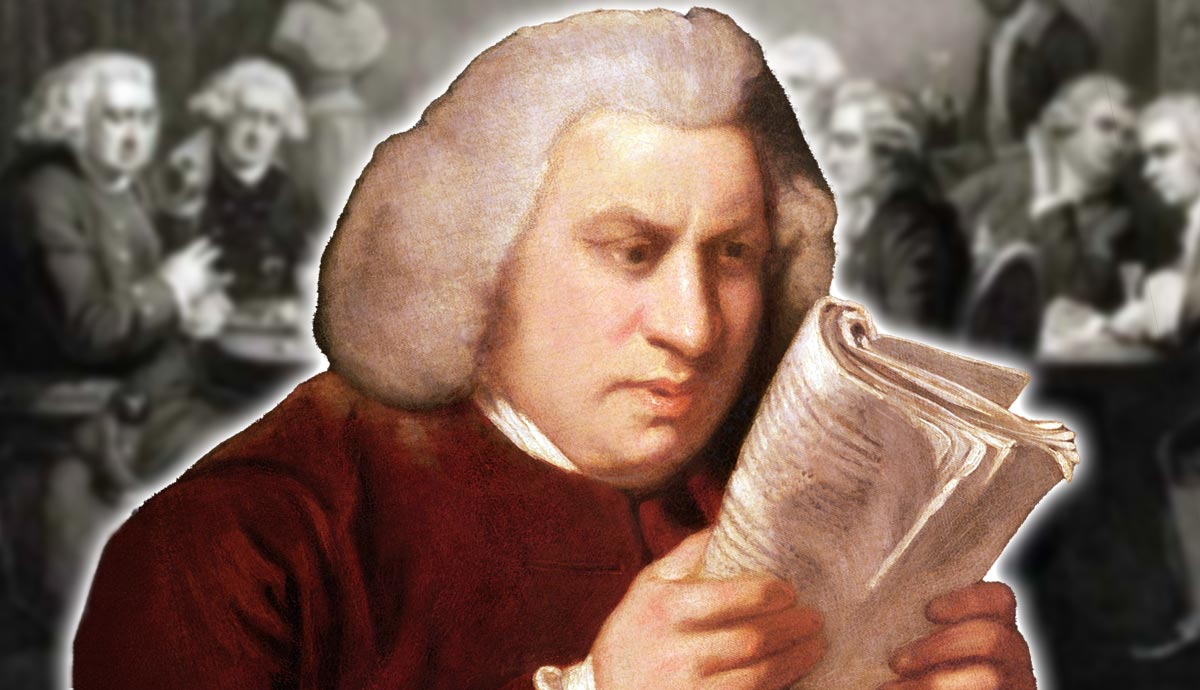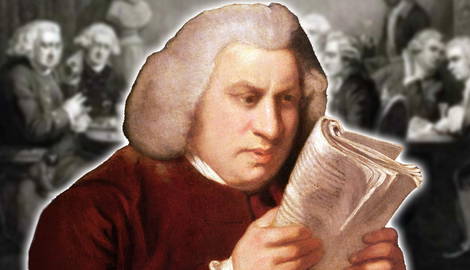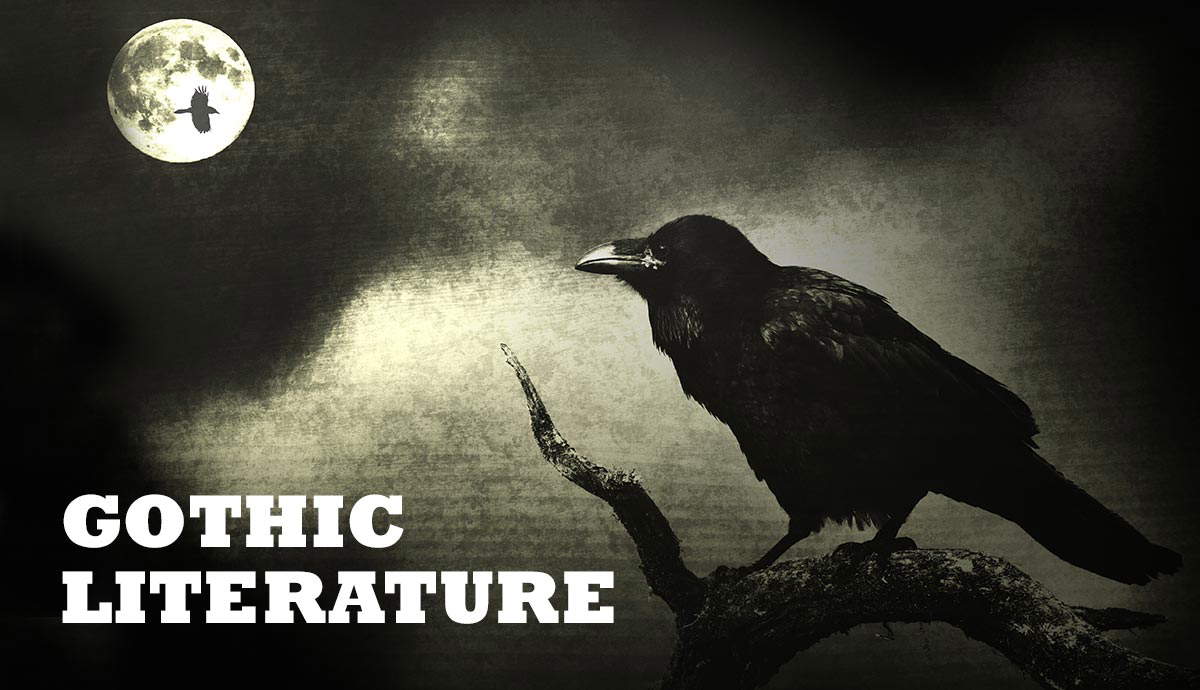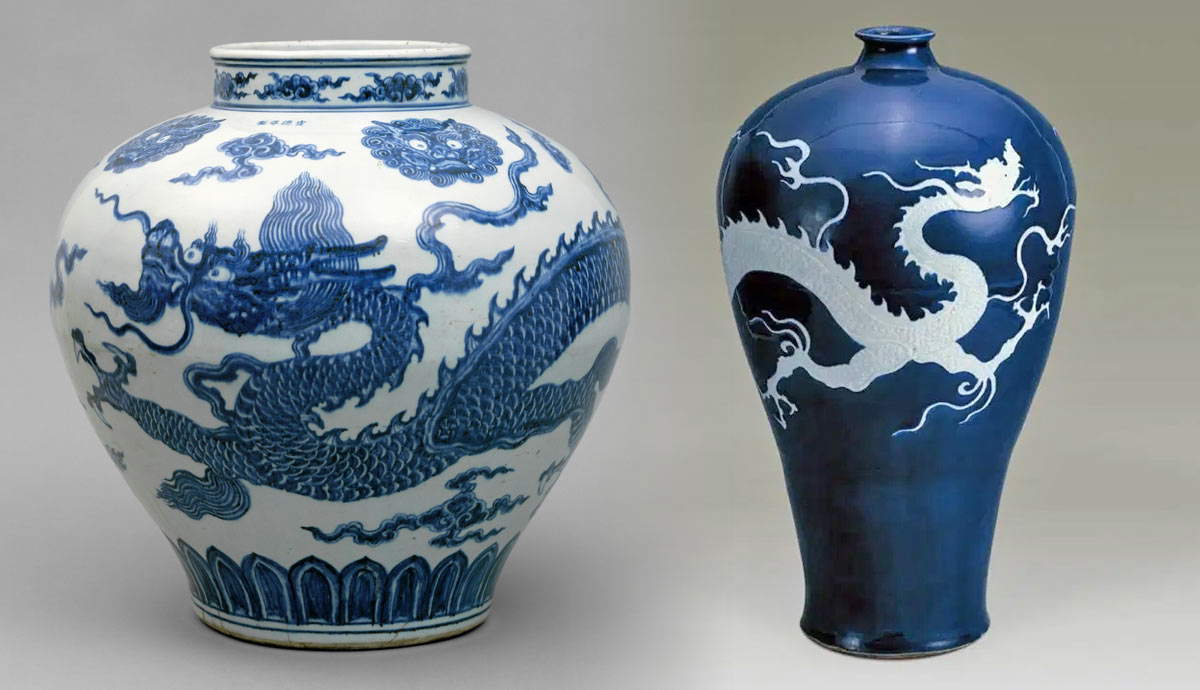
Samuel Johnson was an English author and lexicographer who lived between the years of 1709 and 1784. He is best remembered by literary historians for his famous Dictionary. This dictionary, formally known as A Dictionary of the English Language, was published in 1755 and apparently made him worthy of becoming known widely—unofficially—as Doctor Johnson.
Why not take some time to explore five of Doctor Johnson’s most fascinating works? This eclectic selection includes one biography, one commentary, one dictionary, one travelogue, and one collection. These works showcase just a little snippet of Samuel Johnson’s enormous portfolio, forming just a small part of his vast bibliography.
Samuel Johnson as a Writer

To say that Samuel Johnson is one of the most important figures in British literary history would be an understatement. The Oxford Dictionary of National Biography calls him “the most distinguished man of letters in English history,” and the Encyclopaedia Britannica claims him to be “one of the greatest figures of eighteenth-century life and letters.”
In the 21st century, Samuel Johnson is best remembered for his skills as a lexicographer, and for his most famous publication, A Dictionary of the English Language. However, Johnson actually possessed the ability to write not only informative definitions, but also pretty much anything else he desired. In fact, he not only attempted but also excelled in every genre imaginable during his era.
Many would say that Samuel Johnson had been blessed by God with a way with words. He could write poems, plays, essays, sermons, stories, criticisms, commentaries, dictionaries, biographies, travelogues, diaries, articles, columns, letters, and editorials. He could write for newspapers and magazines; he could write ongoing series’ and one-off showstoppers; he could write at the demand of his publishers or at the request of his commissioners.

The demands of his commissioners and admirers grew steadily throughout his career. During the centuries leading up to Johnson’s era, books had been regarded as special items. Only a person in possession of high class and good fortune could afford to keep something so rare as a book. However, by the mid-18th century, this was no longer the case.
One thing that contributed to the sudden surge in demand for books was the rise in literacy amongst the general public. For the first time in British history, it was common practice to teach one’s child to read and write. The rise in popularity of books led to numerous technical advances in printing and bookbinding.
Books, texts, maps, pamphlets, and even newspapers were now available to the general public at a reasonable cost. These were promising developments for up-and-coming writers such as Samuel Johnson.
All-in-all, Samuel Johnson wrote around 15 pieces that could realistically be described as major literary works. He notably composed a single novella—The History of Rasselas, Prince of Abissinia—which was published in 1759. It is considered by some historians as his only work of fiction, but others argue that due to the philosophical and practical importance it carries, it could still be classified as non-fiction.
Samuel Johnson wrote many poems, five of which are still well-known today. They were Messiah (1728), London (1738), Prologue at the Opening of the Theatre in Drury Lane (1747), The Vanity of Human Wishes (1749), and Irene (1749). He also created more biographies and commentaries than the ones mentioned below. These include A Voyage to Abyssinia (1735), Miscellaneous Observations on the Tragedy of Macbeth (1745), and Life of Browne (1756).

However, it is probably his one-liners that Samuel Johnson is best remembered for. These quotes were recorded by James Boswell in his book, Life of Samuel Johnson. “When a man is tired of London he is tired of life”; “Love is the wisdom of the fool and the folly of the wise”; “the road to hell is paved with good intentions.”
Samuel Johnson had a clear writing style; even to this day, his words are unmistakably his own. He was known as a devout Anglican, a committed Tory, a devoted lover of history and literature, and a habitual traveler. All of these qualities had a great influence not only on his approach and technique but also on his choice of topic.
It may seem to the modern historian that the only thing Samuel Johnson could not do was keep to a timescale. By the year 1762, he had gained a reputation in cultural circles for being a notoriously slow worker. The English poet and satirist, Charles Churchill (1732-1764) wrote a verse in criticism of Johnson’s occasionally non-existent progress: “He for subscribers bates his hooks; he takes your cash, but where’s the book?”

Samuel Johnson’s lack of speed when it came to producing his work may be explained by the fact that he did not actually enjoy the process. He admitted to his friend, Sir John Hawkins, that he did not desire to be well-known, but worked simply because he was too poor not to scrape together any amount of money he could from each publication. We as historians may not like to hear such miserable declarations, but the truth of the matter is that Johnson’s only motivations to write anything at all were financial.
In the midst of his career, Samuel Johnson confessed, “My inducement to write is not love or desire of fame, but the want of money, which is the only motive to writing that I know of.”
As it turns out, Samuel Johnson’s lack of speed did not matter in the long term, and neither did his lack of enthusiasm for what he did. These two unfortunate traits have been almost entirely lost among his many significant talents.
The American literary critic, Harold Bloom, describes the lasting legacy that can be found in Samuel Johnson’s work. “In learning, intellect, and personality, Samuel Johnson seems first among all Western literary critics,” he began. He also claimed that Samuel Johnson’s writings had “unique value,” and that he was “the foremost of interpreters commenting upon the largest of all authors.”
1. Journey to the Western Islands of Scotland

During the late summer and early Autumn of 1773, Samuel Johnson enjoyed a lengthy excursion to the Scottish highlands. Accompanied by his longtime friend, James Boswell, Johnson spent 83 days journeying through Scotland. Johnson was 63; Boswell was just 32.
Their trip began in Berwick-Upon-Tweed. From there, the literary duo traveled from Edinburgh to Saint Andrews, from Saint Andrews to Aberdeen, from Aberdeen to Inverness, and from Inverness to Fort Augustus.
They also visited the islands of the Hebrides including Skye, Raasay, Coll, Mull, Inch, Kenneth, and Iona.
When Samuel Johnson and James Boswell returned to the mainland in Argyll, they visited Inverary, Loch Lomond, Dumbarton, Glasgow, Loudoun, Auchinleck, Ayrshire, and Hamilton.
By no means did Samuel Johnson and James Boswell stumble upon these locations by accident; their travel and accommodation had been meticulously planned during the months leading up to their departure. They traveled by carriage, on horseback, and by boat. Boswell led the way; fortunately, he was Scottish born and bred.
Samuel Johnson published a lengthy account of his excursion a few years later, in 1775. Interestingly, James Boswell also composed his own version of events. His publication, published ten years later in 1785, was entitled A Journal of a Tour to the Hebrides.
These two narratives—A Journey To The Western Isles of Scotland and A Journal Of A Tour To The Hebrides—are often published as a single volume. This is beneficial to any historian who wishes to compare two different perspectives on the same vacation.

However, despite their similarities, the two works focus on very different things. Samuel Johnson is obviously focused on Scotland; James Boswell is obviously focused on Samuel Johnson. Johnson wrote mostly of Scottish life, antiquities, economy, orchards, flowers, trees, whisky, brandy, dress, architecture, religion, language, and education. Boswell, on the other hand, wrote mostly of the behavior of Johnson.

Samuel Johnson and James Boswell were not the only travel writers to have published an account of their Scottish travels. Notably, Thomas Pennant’s A Tour of Scotland was published in 1771. This was a far more serious and comprehensive version. Johnson approved of this work; he described Pennant as “the best traveller” he had ever read, and stated that “he observes more things than anyone else does.”
2. The Lives of the Most Eminent English Poets

Lives of the Most Eminent English Poets was published sometime between the years of 1779 and 1781. The work is made up of short biographies and critical appraisals of 52 poets.
The majority of the poets selected to appear in this work lived during the 17th and 18th centuries. They are arranged, approximately, by the dates of their death.
Some of the better-known poets include John Milton (who wrote Paradise Lost), Johnathan Swift (Gulliver’s Travels), Thomas Grey (Elegy Written In A Country Churchyard), and Alexander Pope (The Dunciad).
A popular misconception about this work is that Samuel Johnson chose the subject for himself. The work was actually commissioned by a group of London publishers—led by Thomas Davis, William Strahan, and Thomas Cadell—and booksellers who desired a publication on the poets of the 18th century.
By the time this book was commissioned, this particular style of biographical writing was nothing new to Samuel Johnson. He had already completed his biography of Mr Richard Savage (which we are yet to review) and had also finished short biographies of Naval Officer Robert Blake and the explorer Francis Drake.

Despite its historical importance, Lives of the Most Eminent English Poets has received heavy criticism from many experts in the field. Many details recorded within the book are deemed untrustworthy; Samuel Johnson has a tendency to present personal opinions and prejudices as fact.
The Cambridge History of English and American Literature states that Samuel Johnson was “much more interested in the man than in that part of him which is the author.” It goes a step further by stating that “he claimed for it no exclusive privileges, nor held that the poet was a man apart to be measured by standards inapplicable to other men.”
Lives of the Most Eminent English Poets is still available to purchase; the biographies are generally bound together in a book of around 600 pages.
3. The Plays of William Shakespeare

From a very early age, Samuel Johnson was extremely familiar with the plays of William Shakespeare. Even as a child, he harbored a great love and understanding of Shakespeare’s many works. From the histories and Roman plays to comedies and tragedies, he enjoyed all genres of the Shakespearean word.
In the way of both reading and writing, Samuel Johnson was known to have possessed capabilities almost unheard of for a child of his era. These talents were encouraged by his father, Michael Johnson, who owned a bookshop in the family’s hometown of Lichfield. Living in small apartments above a well-stocked bookshop, and helping sell and care for these books regularly as a child, is probably what originally influenced the young Samuel Johnson to first open the complete works of William Shakespeare.
We cannot be sure of Samuel Johnson’s favorite play—we can hardly ask him now—but we know that he was particularly fond of Hamlet as a boy. Apparently, he was so scared by the ghost which appears in Hamlet that, for an unspecified amount of time, he was afraid to be left alone at night.

Samuel Johnson’s genuine love of 17th-century literature continued into adulthood. The Plays of William Shakespeare was published in 1765, when Johnson was aged around 56. It was written in collaboration with George Stevens (1736-1800), a well-known English Shakespearean commentator.
The Plays of William Shakespeare was an edition of the dramatic works of Shakespeare, rewritten alongside an educational and informative commentary. To benefit his readers, Samuel Johnson added explanatory notes to various passages. In his preface, which appears at the beginning of the work, Johnson explained that his main intention was to determine the original language of the plays.
When it comes to this particular work, what Samuel Johnson really wanted to do was enable the reader to understand the language. “If Shakespeare has difficulties above other writers,” he explained, “it is to be imputed to the nature of his work, which required the use of common colloquial language, and consequently admitted many phrases allusive, elliptical, and proverbial, such as we speak and hear every hour without observing them.”
4. An Account of the Life of Mr Richard Savage

The Life of Mr Richard Savage, which was originally published in 1744, was the first of Samuel Johnson’s many biographies. The title is commonly shortened (Life of Savage) and is also commonly lengthened (Account of the Life of Mr Savage, Son of the Earl Rivers).
So, one may naturally ask, who exactly was this Mr Richard Savage?
Well, Richard Savage was an English poet who lived between the years of 1697 and 1743. He published some notable works himself; none of them quite as well known as those of Samuel Johnson. The publications of the theatrical works Love in a Veil and Sir Thomas Overbury, alongside the poems The Bastard and The Wanderer, are just a few of the highlights of his career.
Samuel Johnson’s account of Richard Savage’s life includes claims that he was actually the illegitimate child of a noble family that disowned and abandoned him at birth. Savage led a fairly controversial and unconventional life, and Johnson used his recorded experiences as inspiration to complete a lengthy biography.

Generally speaking, the biography was well received and came to be an early source of success for Johnson, both financially and commercially.
The English portraitist Joshua Reynolds (1723-1792), who also happened to be a close friend of Samuel Johnson, granted the book with some extremely high and extremely public praise. He claimed that the work “seized his attention so strongly that, not being able to lay it down until he had finished it when he attempted to move, he found his arm totally benumbed.”
High praise continued well into the 20th and 21st centuries. Walter Jackson Bate (1918-1999) wrote that the work “still remains one of the innovative works in the history of the biography.” A little later, the historian Margaret Lane wrote that Life of Savage is “the most absorbing of all Johnson’s brief biographies, and its news value at the time made it compulsive reading.”
5. A Dictionary of the English Language

There is no doubt about it: A Dictionary of the English Language was Samuel Johnson’s greatest accomplishment. He spent nine long years compiling the entries, it was his most anticipated achievement, and it remains his best-known work. It even made him worthy of the title Doctor Johnson. In its day, Samuel Johnson’s dictionary was publicly declared “one of the greatest single achievements of scholarship.”
Contrary to popular belief, Samuel Johnson was not the first man in history to create an English dictionary. Over the previous century and a half, more than twenty dictionaries had been published in Britain. The oldest of these was written by Sir Thomas Elyot in 1538 and was advertised as a Word Book. Other lexicographers who published early versions of the dictionary included Richard Mulcaster (1583), John Florio (1598), Robert Cawdrey (1604), and Benjamin Martin (1749).
However, no other dictionary had yet been so thorough or comprehensive. Johnson’s dictionary boasts just under 140,000 definitions. Present versions of the work contain just under 2,350 pages.
Some of the best-known examples of Samuel Johnson’s entries include “Excise,” which he described as “a hateful tax levied upon commodities and adjudged not by the common judges of property but by wretches hired to those whom excise is paid,” and “Oats,” which he rather amusingly reported to be “a grain which in England is generally given to horses, but in Scotland supports the people.”

Whimsically, Samuel Johnson also included words that had been used by various writers but did not actually exist at the time. One example is the word “Writative,” which Johnson listed among his entries. The word was originally coined by the poet Alexander Pope (1688-1744). Johnson explained its meaning with an example of its correct usage: “Increase of years makes men more talkative but less Writative; to that degree I now write letters.”
As anyone may observe, Samuel Johnson was very unlike modern lexicographers, especially in the way that he was rather free with his definitions. As well as incorporating fictional words into his work, he also injected humor into the definitions of real words with the use of his own thoughts and opinions.
Although the historical importance of this dictionary cannot be underestimated, by modern standards, Samuel Johnson’s etymology is generally considered poor.
It may even have been that Samuel Johnson thought his work could have been improved. Within his dictionary, he actually gave a description of himself. A lexicographer, he claims, is “a writer of dictionaries, a harmless drudge that busies himself in tracing the original and detailing the signification of words.”
Webster’s Dictionary (1828) and the Oxford English Dictionary (1884) were both inspired by Samuel Johnson’s version. Both of these 19th-century publications borrowed elements of Johnson’s dictionary, including its enormous number of words, its clear method of alphabetizing, and its structure in general.
The Death and Literary Legacy of Samuel Johnson

In the year 1784, Samuel Johnson died of natural causes at the age of 75.
According to James Boswell, the question of where he would be buried lay heavily on Samuel Johnson’s mind. A few days before his death, Johnson asked Sir John Hawkins (one of his executors), where his body might be placed. Hawkins reassuringly answered, “Doubtless, in Westminster Abbey.”
As was predicted, Samuel Johnson was buried in Westminster Abbey and has laid there for the last 240 years beside some of the greatest writers, scientists, and royals that England has ever known.
Rather fittingly, Samuel Johnson’s final resting place is particularly close to William Shakespeare’s memorial. His grave is now looked upon by the one million visitors who survey the abbey annually.
The inscription on Samuel Johnson’s grave reads “Samuel Johnson, Obiit XIII die Decembris, Anno Domini M.DCC.LXXXXIV.” This translates as “Samuel Johnson, buried twentieth of December, the year of our Lord 1784.”
The date of his death, December 13, is now commemorated in the Church of England’s Calendar of Saints. There is also a memorial to him at Saint Paul’s Cathedral in London.
The critic Harold Bloom placed Samuel Johnson’s work above that of all other English writers. Bloom described Johnson as being “unmatched by any critic in any nation before or after him.”










